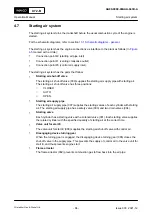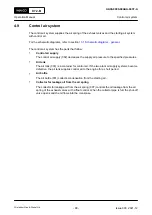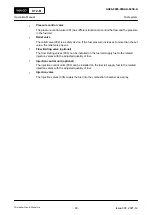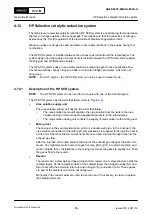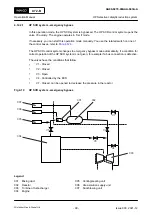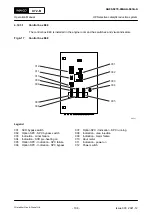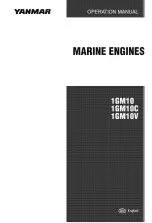
4.12
HP Selective catalytic reduction system
The high pressure selective catalytic reduction (HP SCR) system is an optional system to decrease
the level of nitrogen oxides in the exhaust gas. This makes sure that the emissions of nitrogen
oxides obey the Tier III regulations of the International Maritime Organization (IMO).
Nitrogen oxides are dangerous and are made in secondary reactions in the engine during fuel
combustion.
The HP SCR system is installed between the exhaust gas manifold and the turbocharger. The
system design and the supply of components is divided between the HP SCR system supplier,
the shipyard and WinGD/engine builder.
The HP SCR system adds an urea water solution as reducing agent to the exhaust gas flow.
Chemical reactions change nitrogen oxides to molecular nitrogen and water, which are not
dangerous.
NOTE:
For a DF engine - the HP SCR system can only be used in diesel mode.
4.12.1
Description of the HP SCR system
NOTE:
The HP SCR system can be used for an engine with one or two turbochargers.
The HP SCR system has the parts that follow (refer to
):
•
Urea solution supply unit
The urea solution supply unit has the two parts that follow:
○
The urea solution pump unit supplies the urea solution from the tank to the urea
solution dosing unit and keeps the applicable pressure in the related pipes.
○
The urea solution dosing unit controls the supply of urea solution to the mixing duct.
•
Mixing duct
The mixing duct has an injection lance, which is a double wall pipe. In the inner part, the
urea solution is supplied. In the outer part, compressed air is supplied. In the injection nozzle
at the end of the lance the two components are mixed and injected through holes into the
exhaust gas flow.
After the injection of the urea solution the heat of the exhaust gas changes the water into
steam. The high temperature also changes the urea ((NH
2
)
2
CO) into ammonia (NH
3
) and
carbon dioxide (CO
2
). Installations in the mixing duct make the gases to equally mix. Then
the gases flow to the reactor.
•
Reactor
The reactor has a steel wall and has an inlet and an outlet cone. A steel structure holds the
catalyst layers. At the catalytic surface of the catalyst layers the nitrogen oxides (NO and
NO
2
) react with the ammonia into molecular nitrogen (N
2
) and water (H
2
O). These gases
are part of the ambient air and are not dangerous.
Manholes in the reactor walls are used to examine and, if necessary, to clean or replace
the catalyst elements.
X72-B
AA00-9270-00AAA-043A-A
Operation Manual
HP Selective catalytic reduction system
Winterthur Gas & Diesel Ltd.
- 96 -
Issue 003 2021-12



